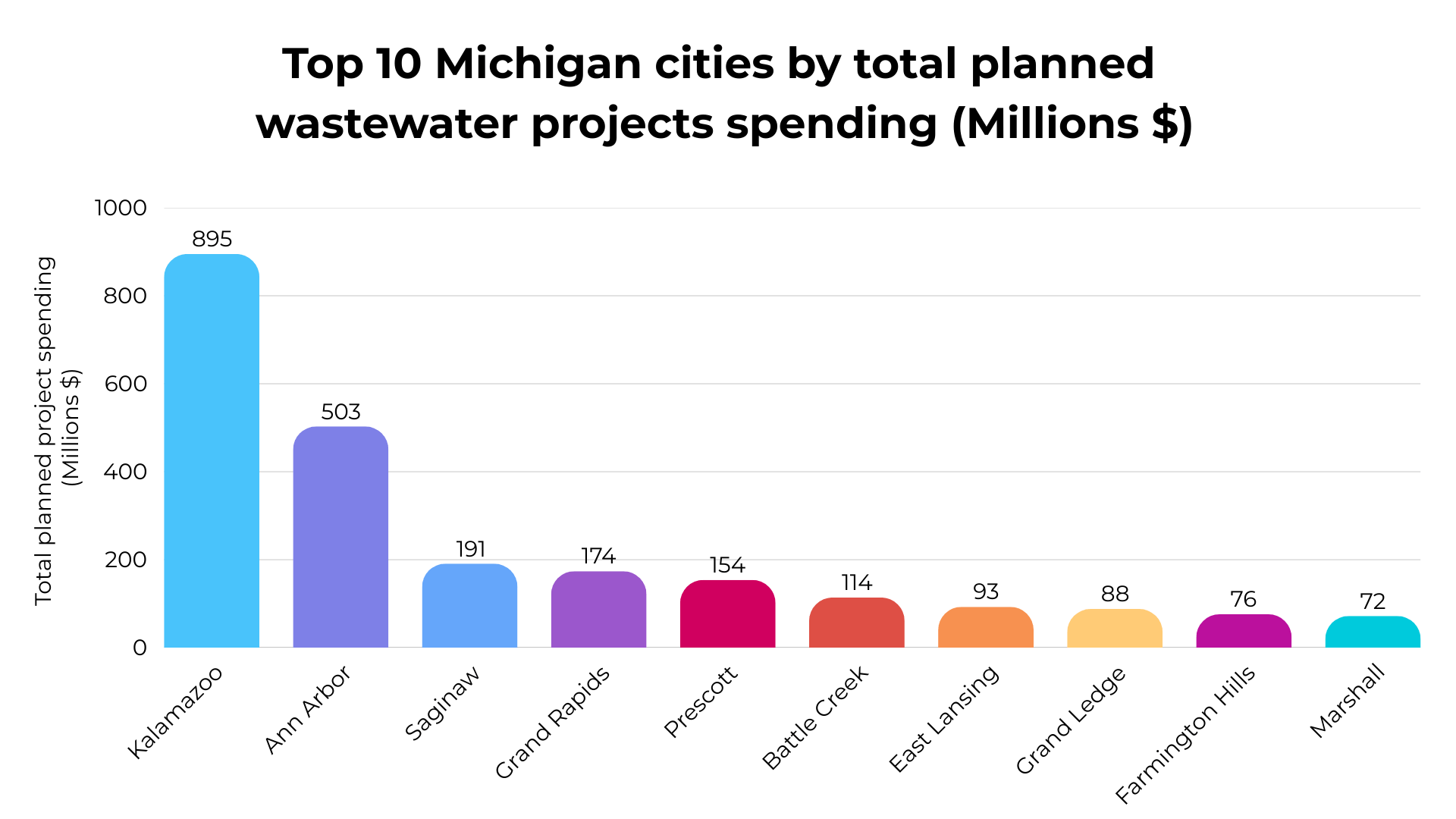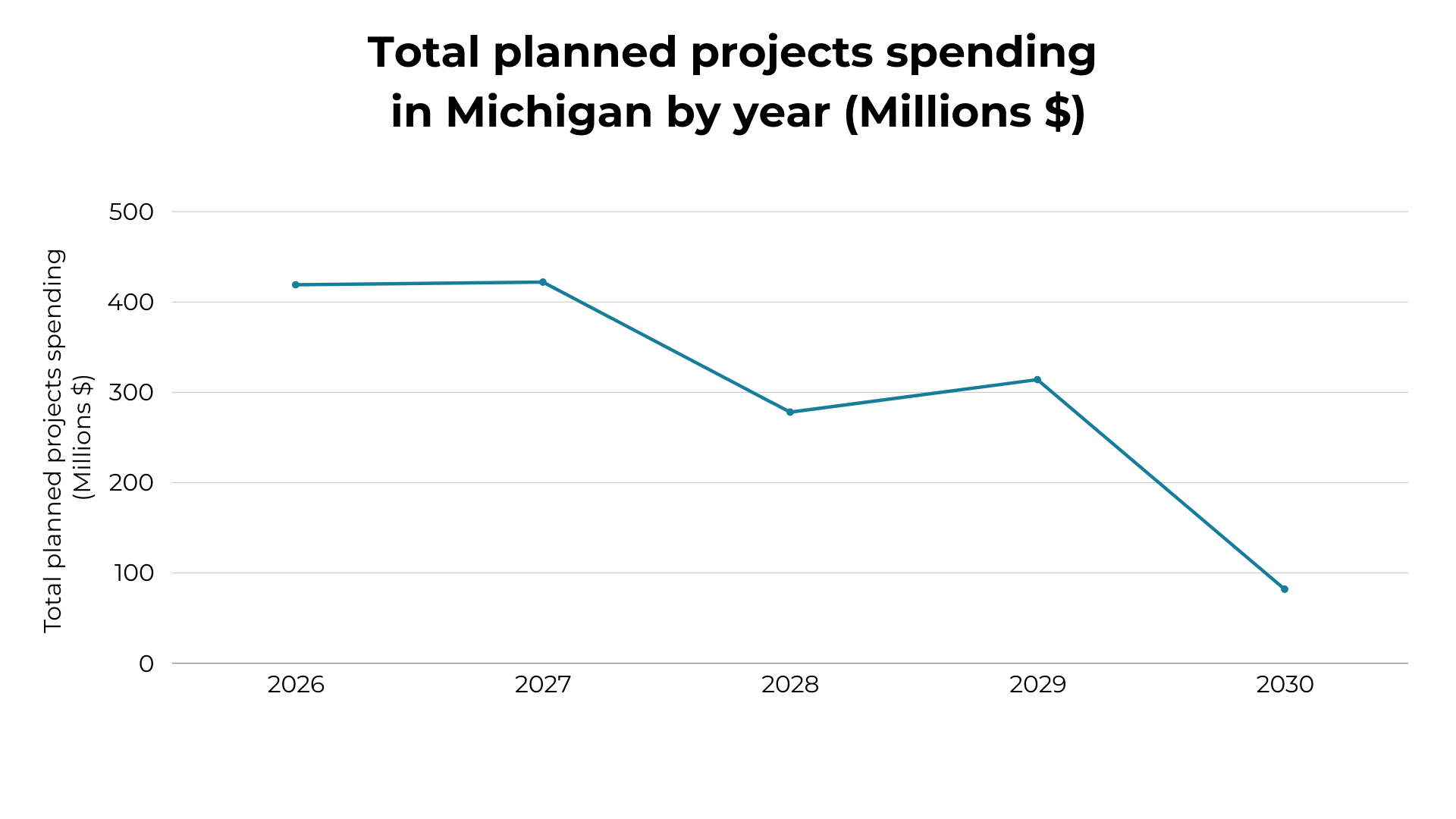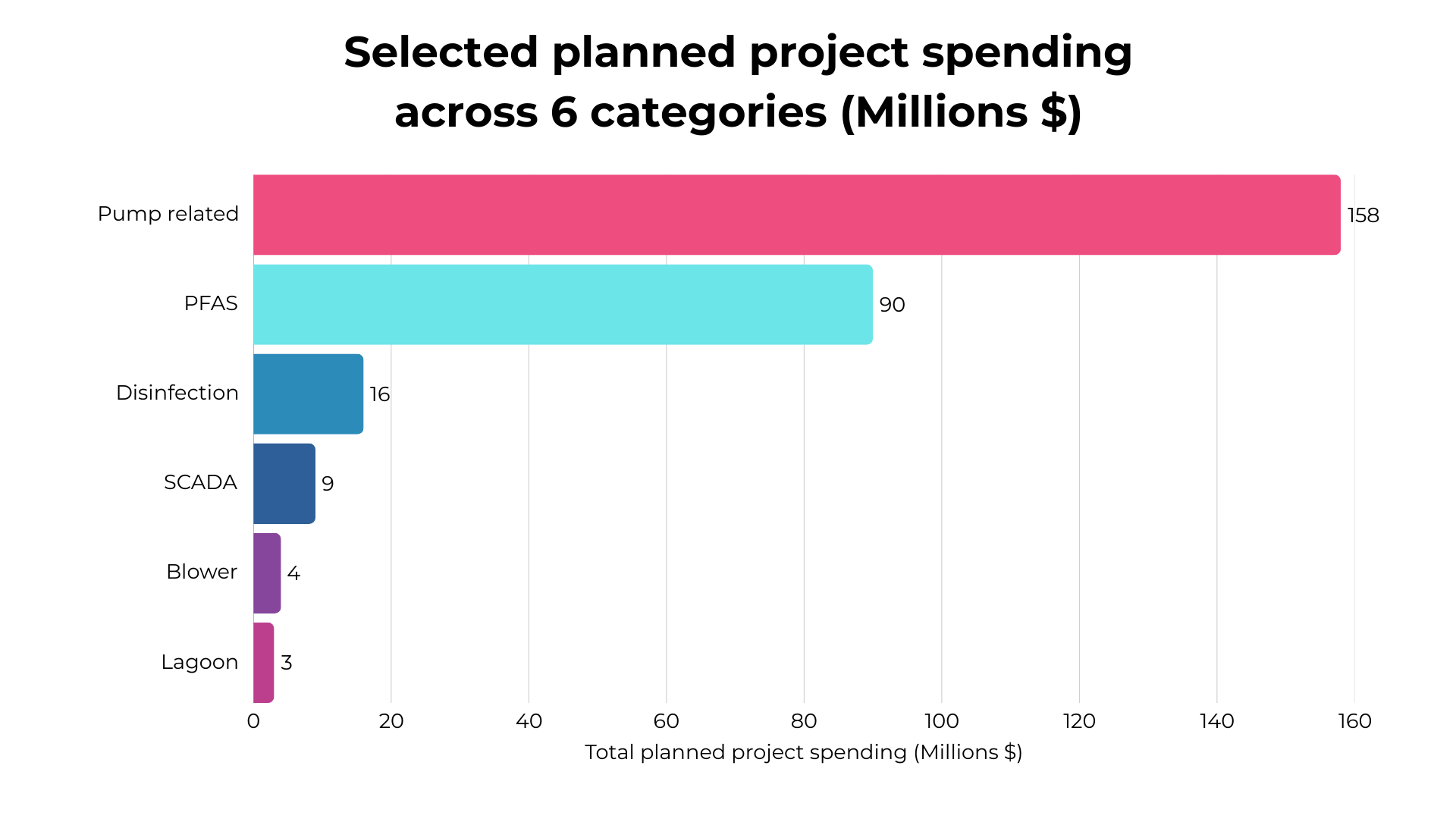Michigan cities prioritize wastewater and sewer infrastructure with over $3.5 Billion in planned investments
An increasing number of cities across Michigan are now publishing Capital Improvement Plans (CIPs), enhancing transparency and long-term infrastructure planning. This article presents a comprehensive analysis of water and sewer-related capital improvement projects planned to begin in 2025 or later. Drawing on data from 120 Capital Improvement Plans (CIPs) and adopted municipal budgets, the analysis covers 2,628 individual projects representing a total planned investment of $3,518,245,978 across 103 cities in Michigan in the years to come. The objective is to assess the scale, geographic distribution, and projected timelines of these critical infrastructure investments, offering insights into how cities are addressing essential water and sewer system upgrades.
Key findings
-
Significant investments: Approximately $3.52 billion is allocated across 2,628 identified water, wastewater and sewer projects in 103 Michigan cities.
-
Dominant spending hub: Kalamazoo shows exceptionally high planned spending at ~$895 million, significantly overshadowing other cities. Ann Arbor follows with ~$503 million.
-
Near-term budget allocation: Spending is heavily concentrated in the near future, with 2027 projected to have the highest investment (~$422 million), followed by 2026 (~$419 million) and 2028 (~$278 million).
-
Project size distribution: While the average project budget is ~$1.4 million, the median is much lower ($300,000), indicating most projects are relatively small. However, large projects significantly impact total spending such as the KWRP sustainable residual biosolids project.
Infrastructure investments varies widely across Michigan cities
Capital investment in waste and sewer infrastructure varies considerably across Michigan cities. Kalamazoo leads by a substantial margin, with a total projected budget of $895 million. This is dominated by a few large-scale, high-budget projects such as the extension of the water system in sections of both Richland Township and Ross Township in response to PFAS contamination in some areas of the local groundwater. Ann Arbor, Battle Creek, and Saginaw also rank among the top cities by projected spending, though their totals remain significantly lower than Kalamazoo's.

Figure 1: Top 10 Michigan Cities by Total Wastewater Project Spending (Millions $)
Near-term focus dominates planned infrastructure projects
Planned spending on wastewater and sewer infrastructure is heavily concentrated in the earlier years of the forecast period. Investment levels remain high through fiscal years 2026 and 2027, after which projected budgets decline. This pattern indicates a near-term focus on advancing critical infrastructure improvements. As additional Capital Improvement Plans (CIPs) are released, it is expected that future spending will increasingly target projects scheduled to begin in and beyond 2026. Klarifi continues to closely monitor CIP publications to support early planning and informed decision-making.

Figure 2: Total planned projects spending in Michigan by year (Millions $)
Spending by project type
Across Michigan cities, capital improvement investments reveal a strong emphasis on core utility infrastructure, with pump related projects commanding a big share at over $157 million in planned spending. This substantial spending highlights the foundational role pumps play in water and wastewater systems. PFAS-related projects follow with nearly $90 million, reflecting growing urgency around emerging contaminants and water safety. However, this is primarily driven by four major projects planned across Kalamazoo, Grand Rapids, and Prescott, all of which are expected to commence in 2025.

Figure 3: Selected planned project spending across 6 categories (Millions $)
UV disinfection and SCADA systems received $16 million and $9 million, respectively, signaling efforts to modernize treatment technologies and enhance operational control. Meanwhile, blower and lagoon projects, though smaller in scale with $4.4 million and $3.3 million, point to targeted upgrades in treatment processes and support for rural systems. Overall, the distribution suggests a dual focus on modernization and environmental compliance, while continuing to invest in essential infrastructure.
Small projects dominate in number, but big projects drive the dollars
While the total spending figures are large, the distribution of individual project budgets reveals that the majority of initiatives are smaller in scale. The median project budget is only $300,000, and 75% of all projects are budgeted at $1 million or less. However, the presence of a smaller number of very large projects (up to $142 million) significantly skews the average budget upwards and contributes heavily to the total spending.

Figure 4: Nearly three-quarters of projects are small scale, with almost half under $250K
How to find details about individual projects using Klarifi's platform
Klarifi collects, organizes, and makes Capital Improvement Projects easily searchable at the line-item level. Visit our platform to explore these insights in detail. Klarifi collects, organizes, and makes Capital Improvement Projects easily searchable at the line-item level. Explore the walkthrough below and experience the difference for yourself.


Conclusion
Michigan cities are planning substantial investments in wastewater infrastructure, particularly in the 2026-2027 timeframe. While spending is widespread across many cities, Kalamazoo represents a significant concentration of the planned budget. The majority of individual projects are relatively small, but large-scale initiatives drive the overall investment figures. This analysis provides a valuable snapshot of planned spending based on the available CIP data from Klarifi's market intelligence platform, highlighting key areas and timelines for wastewater infrastructure development in Michigan.
Your one stop shop for wastewater lead generation
for wastewater expertsCity budgets, compliance history, official contacts and more...



